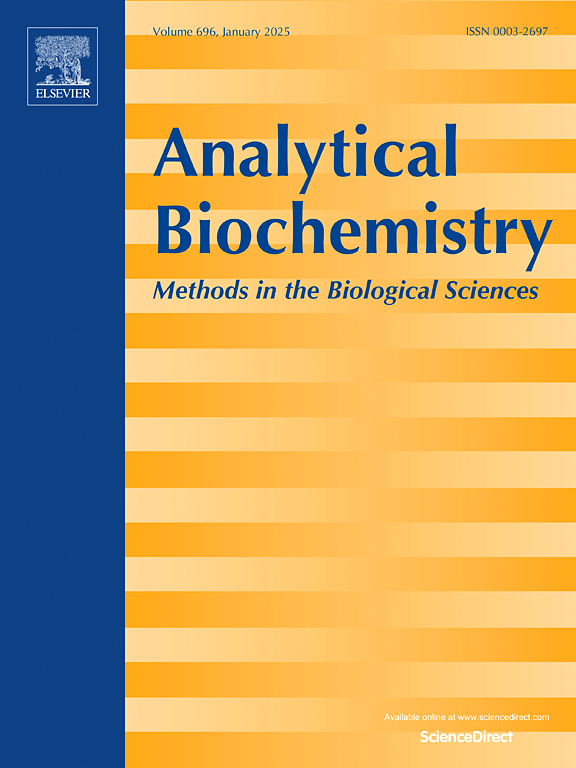DHUpredET: A comparative computational approach for identification of dihydrouridine modification sites in RNA sequence
IF 2.5
4区 生物学
Q2 BIOCHEMICAL RESEARCH METHODS
引用次数: 0
Abstract
Laboratory-based detection of D sites is laborious and expensive. In this study, we developed effective machine learning models employing efficient feature encoding methods to identify D sites. Initially, we explored various state-of-the-art feature encoding approaches and 30 machine learning techniques for each and selected the top eight models based on their independent testing and cross-validation outcomes. Finally, we developed DHUpredET using the extra tree classifier methods for predicting DHU sites. The DHUpredET model demonstrated balanced performance across all evaluation criteria, outperforming state-of-the-art models by 8 % and 14 % in terms of accuracy and sensitivity, respectively, on an independent test set. Further analysis revealed that the model achieved higher accuracy with position-specific two nucleotide (PS2) features, leading us to conclude that PS2 features are the best suited for the DHUpredET model. Therefore, our proposed model emerges as the most favorite choice for predicting D sites. In addition, we conducted an in-depth analysis of local features and identified a particularly significant attribute with a feature score of 0.035 for PS2_299 attributes. This tool holds immense promise as an advantageous instrument for accelerating the discovery of D modification sites, which contributes too many targeting therapeutic and understanding RNA structure.

DHUpredET:一种鉴定RNA序列中二氢嘧啶修饰位点的比较计算方法。
基于实验室的 D 位点检测既费力又昂贵。在这项研究中,我们开发了有效的机器学习模型,采用高效的特征编码方法来识别 D 位点。最初,我们探索了各种最先进的特征编码方法和 30 种机器学习技术,并根据其独立测试和交叉验证结果选出了前 8 个模型。最后,我们利用额外树分类器方法开发了 DHUpredET,用于预测 DHU 位点。DHUpredET 模型在所有评估标准上都表现出了均衡的性能,在独立测试集上的准确率和灵敏度分别比最先进的模型高出 8% 和 14%。进一步的分析表明,该模型在使用位置特异性双核苷酸(PS2)特征时取得了更高的准确率,因此我们得出结论:PS2 特征最适合 DHUpredET 模型。因此,我们提出的模型是预测 D 位点的最佳选择。此外,我们还对局部特征进行了深入分析,发现了一个特别重要的属性,其 PS2_299 属性的特征得分为 0.035。该工具有望成为加速发现 D 修饰位点的有利工具,为靶向治疗和理解 RNA 结构做出巨大贡献。
本文章由计算机程序翻译,如有差异,请以英文原文为准。
求助全文
约1分钟内获得全文
求助全文
来源期刊

Analytical biochemistry
生物-分析化学
CiteScore
5.70
自引率
0.00%
发文量
283
审稿时长
44 days
期刊介绍:
The journal''s title Analytical Biochemistry: Methods in the Biological Sciences declares its broad scope: methods for the basic biological sciences that include biochemistry, molecular genetics, cell biology, proteomics, immunology, bioinformatics and wherever the frontiers of research take the field.
The emphasis is on methods from the strictly analytical to the more preparative that would include novel approaches to protein purification as well as improvements in cell and organ culture. The actual techniques are equally inclusive ranging from aptamers to zymology.
The journal has been particularly active in:
-Analytical techniques for biological molecules-
Aptamer selection and utilization-
Biosensors-
Chromatography-
Cloning, sequencing and mutagenesis-
Electrochemical methods-
Electrophoresis-
Enzyme characterization methods-
Immunological approaches-
Mass spectrometry of proteins and nucleic acids-
Metabolomics-
Nano level techniques-
Optical spectroscopy in all its forms.
The journal is reluctant to include most drug and strictly clinical studies as there are more suitable publication platforms for these types of papers.
 求助内容:
求助内容: 应助结果提醒方式:
应助结果提醒方式:


